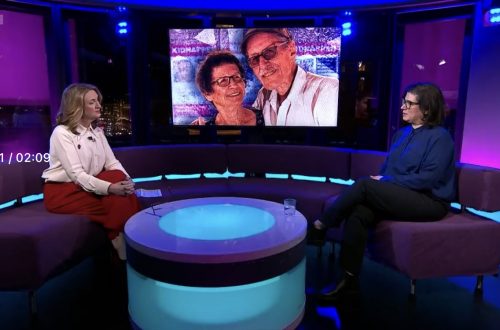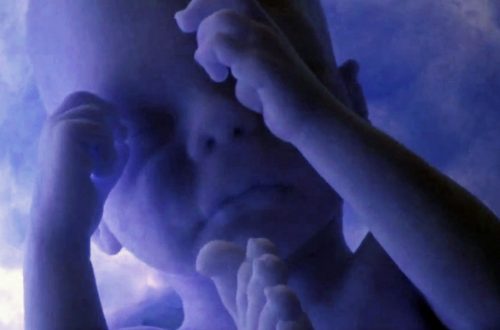Recalling Joe Weissman’s discussion about an odious facilitator for the likes of Tom Carroll and who is granted anonymity by a group of bloggers, I was reminded of Kenneth Good’s justification for his marriage to a girl in her early teens.
Currently is on the roll of sociology staff at New Jersey City University, Good had journeyed to Amazonia in 1974 as a post-grad researcher into the Ya̧nomamö under project leader, Napoleon Chagnon.
Over previous decades, this tribal group had become the darling of the anthropology community and Western observers as a society unencumbered by the flotsam and jetsam of Western civilization and post-agricultural ideas. This reached its pinnacle when they were allowed to meet Sting who, amongst other efforts, in 1988 brought hundreds of Lancashire schoolchildren to sing homilies for their in Song of the Forest, a Channel Four adaptation of Peter Rose and Anne Conlon’s musical, Yanomamo; without the squiggling thing under the A and dotty thing above the O.
It should be noted that “Ya̧nomamö” derives simply from the tribal group’s word for “human being”, and was coined as an exonym by Chagnon. Now a Professor Emeritus at UCSB, Chagnon has fallen out with fellow members of the academic community for a variety of reasons, some reasonable some not. His reasons for doing so with Good appear to fall firmly into the first category.
After about a decade of observation, Good went crashing over the line between clinical detachment and irresponsibility by marrying and proceeding to father children with Yarima, a Ya̧nomamö girl who had just commenced menses. At the risk of sounding like a cultural relativist – which I emphatically am not – I can appreciate that in many non-Western societies this is considered a marker for reaching marriageable age.
As it was in pre-Industrial Europe, where the Church may have allowed a marriage to a pubescent girl but prohibited sexual congress until she was of a suitable age. There was sufficient disgust at child abuse for Nicholas Gombert, a 16th Century Flemish composer and suspected pederast to be sent to the galleys.
Good, however, was not from this cultural background and had would have been cautioned against by contemporary Western attitudes towards towards sexual relations with female adolescents. In Secrets of the Tribe by José Padilha and premiered at the 2010 Sundance Festival, Chagnon said that such attraction could be described as paedophilia, and I cannot really disagree.
I had been planning on writing something about the documentary since catching the latter half of it on BBC4 a few weeks ago. The conduct of all involved with the Ya̧nomamö – from the Brazilian and Venezuelan authorities and miners to anthropologists including Good and Chagnon to Sting (who now is more likely to be advertizing Jaguar cars with mahogany dashboards than being found in the Amazonian rainforest) has been criticized for years, coming to a head in in 2000 with the publication of Darkness in El Dorado by Patrick Tierney.
Since its development in the late 19th Century, anthropology has reflected many of the political and social concerns of the time. From a depiction of ‘dark’ or ‘savage’ races during the rise of European Imperialism which was to act as a force for civilization (as well as personal enrichment) on those “dark races” who had “run, like all other animals, a certain course of existence” to a reaction against the ultimate conclusion of the biological racism and eugenics which had defined the first half of the 20th Century where pre-industrial or, better, pre-agricultural societies were portrayed as innately good and representative of a pre-Lapsarian bliss.
Then came Chagnon, who seemed to resurrect Charles Dickens’ dismissal of the ‘noble savage’. Not that I necessarily have an intellectual objection to that. Just as Dickens, who saw the squalor and misery around him in Victorian London and, like many thinking-men of his age, would also have reacted against the failures of popular perceptions of Rousseauian theory in the catastrophic wars across European in the early 19th Century, Chagnon started his academic career just a few years after the supposedly civilized European and Japanese had killed upwards of 100 millions people.
Chagnon started work in the 1960s, looking for an underlying violent nature in human behaviour, which may not be too far from Rousseau’s original thoughts: that, in a state of pre-civilization, humans were as indistinguishable from the fox which kills the rabbit, and that it was civilization which bound them together in viable communities.
Chagnon’s thesis soon was enunciated in his 1968 book, ‘Ya̧nomamö: the Fierce People’ which postulated that as many as two out of five surviving adult Ya̧nomamö men had participated in at least one homicide; and that such prowess was an aid to attracting sexual partners. I cannot see what is controversial about the latter point, although in modern civilization, women are also attracted to those men who carefully tend vegetables. At least, I damn well hope so.
The former, however, was problematic when it became apparent that those Ya̧nomamö villages with the greatest levels of violence and homicide were those with which Chagnon’s team was closely associated. Credible reports state that Chagnon provided metal machetes to Ya̧nomamö men for cooperation which, regardless of his intentions, looks as if it could easily have resulted in greater violence just as the introduction of firearms to the Highlands of Papua New Guinea have caused spikes in violent deaths.
So besotted was academia and popular media with the Ya̧nomamö that I remember an opinion piece from the early 1990s which attempted to through doubt on the claim that increased salt in our diets results in stress. The Ya̧nomamö had one of the lowest intakes in the world, yet still were killing each other a plenty this absurd piece said.
Then came Tierney’s book, which divided debate in ways reminiscent of the Dreyfus affair, up to the suspicion that a consensus had been arrived at that Chagnon’s martial socio-biological viewpoint had to be completely discredited just as even some who suspected Dreyfus’ ultimate innocence still thought he should be sacrificed to maintain the integrity of the French military. The most obscene allegation was that, when managing a measles outbreak in 1966, Chagnon and his mentor, James Neel (the geneticist) had deliberately infected villagers or willingly withheld efficacious treatment regiemes. Reference was made to Neel’s background in early 20th Century eugenicist theories.
The doubts were immediately apparent, with proven reports that Chagnon and Neel both had presented themselves above and beyond that which was expected of any relief workers, and that the treatment regieme they did use was recommended by the local national authorities and several international bodies. Neel, although undoubtedly affected by out-of-vogue ideas, never had shown himself to be remotely similar to Mengele et al.
Yet, the official and media response against Chagnon – and, posthumously, Neel – was vituperative, with his books being withdrawn from many university courses and even calls for war-crimes charges to be brought regarding the measles event.
Ten years on, Tierney’s book continues to be defended on faith as much as it continues to be torn-apart by review. Bioethicist Alice Dreger has presented a study (restricted access, but discussed by Kenan Malik) which states, amongst other things, that a dossier which Tierney claimed to have been based on primary research by local activists was written by himself, and then translated into Portuguese by a colleague whom he then persuaded to claim authorship.
If this is true, as it looks like, then I would have little problem in calling Tierney’s book absolute trash. Not shite – because that is a wonderful and versatile substance which can be used for fertilizer, fuel, building materials and microbial research – but complete and utter trash. Irresponsible trash as well because it touched-upon allegations that one of Chagnon’s colleagues, French anthropologist Jacques Lizot had sexually abused Ya̧nomamö boys.
Just as it may now be difficult to criticism some elements of Chagnon’s work – such as potentially facilitating violence with gifts of machetes – because of the refuted obscene claims of mass-murder and other more ludicrous claims of his turning-up at villagers brandishing a shotgun, so too can allegations against Lizot.

